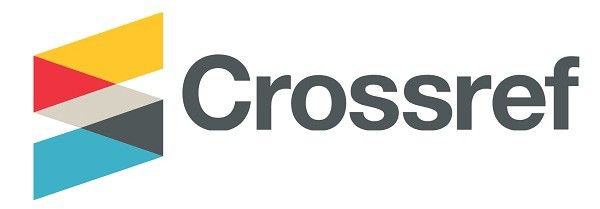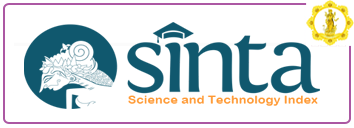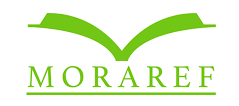Penjaminan Mutu Perguruan Tinggi: Dilema Politik Organisasi dan Urgensi Penggunaan Profesional Eksternal
DOI:
https://doi.org/10.25078/jpm.v3i2.202Keywords:
Quality Assurance, OrganizationalPolitic, External ProfessionalAbstract
Higher education institutions (HEI) are encouraged to develop Internal Quality Assurance System (IQAS) that could assist the process of external audit, accreditation and to face the tight competition. General phenomenon of HEI’sIQAS,so far, is still away from qualified and even practically tends to be manipulative. This literature-based article aims to review the role of leadership in campus political practice and the urgence of external professional usage in order to improve internal quality assurance in HEI. The study reveals that improper campus political practice has become the bottleneck for the effectiveness of IQAS. It needs a fundamental change of top leader’s paradigm, particularly in the policy of internal auditor placement. A revolutionary breakthrough of hiring external professional tobe placed as internal auditor seems to be needed, specifically to keep the independency and objectivity, as well as to assure the qualified performance of all units in HEI.
Downloads
References
Anoraga, P. 2009. Psikologi Kerja. Jakarta: Rineka Cipta
Atmodiwiryo, S. 2011. Manajemen Pengawasan dan Supervisi Sekolah. Jakarta: Ardadizya Jaya
Azoury, N., L. Daou dan C. El Khoury. 2014. University Image and its Relationship to Student Satisfaction – Case of the Middle Eastern Private Business Schools. International Strategic Management, 1-8. http:/dx.doi.org/10.1016/j.ism.2014.07.001
Babalola, J.B. 2011. Quality Assurance in Education: Input, Process and Output. African Journal of Educational Research and Development, (4)2
Black, Simon A. 2015. Qualities of Effective Leadership in Higher Education. Open Journal and Leadership, 4, 54-66. http://dx.doi.org/10.4236/oll.2015. 42006
Cheng, M. 2010. Audit Cultures and Quality Assurance Mechanism in England: A Study of Their Perceived Impact on the Work of Academics. Teaching in Higher Education, 15(3), 258-271. http://dx.doi.org/10.1080/1356251100 3740817
Davis, J., Hides, M.T., dan Casey. S. 2001. Leadership in Higher Education. Total Quaity Management, 12, 1025-1030. http://dx.doi.org/10.1080/ 09544120120096197
Direktorat Jenderal Pendidikan Tinggi. 2010. Standar Mutu Pendidikan Tinggi. Bahan Presentasi.
Garwe, E.C. 2013. The Effect of Institutional Leadership on Quality of Higher Education Provision. Research in Higher Education Journal, 1-10.
Hanover. 2014. Trends in Higher Education Marketing, Recruitment, and Technology. Hanover Research, March 2014
Hodson, P.J. dan Thomas, H.G. 2010. Higher Education as an International Commodity: Ensuring Quality in Partnership. Assessment & Evaluation in Higher Education, 26(2), 101-112. http://dx.doi.org/10.1080/ 02602930020018944
In’airat, M.H. dan Al-Kassem, A.H. 2014. Total Quality Management in Higher Education: A Review. International Journal of Human Resource Studies, 4(3), 294-307
John, J.A.J. dan C.W.Hin. 2015. The Effect of Workload Pressure, Person Job-Fit and Moderating Effect of Innovation Trust on Creativity Among Educators of Private Higher Education Institutions in Malaysia – A conceptual framework. Asian Journal of Business and Management Sciences, 4(6), 26-34
June, S., Y.K. Kheng dan R. Mahmood. 2013. Determining the Importance of Competency and Person-Job Fit for the Job Performance of Service SME’s Employees in Malaysia. Asian Social Science, 9(10), 114-123
Knight, Jane. 2014. Professional Development for Faculty and Staff in Ras Al Khaimah’s Higher Education Institutions. Sheikh Saud bin Saqr Al Qasim: Foundation for Policy Research. Report 01, December 2014, UAE
Koran Sulindo. 2017. Kemenristek Dikti Tutup 140 Perguruan Tinggi Selama 2016. http://koransulindo.com/kemenristek-dikti-tutup-140-perguruan-tinggi-selama-2016/
LePine, J.A., Podsakoff, N.P., dan LePine, M.A. 2005. A Meta-Analytic Test of the Challenge Stressor-Hindrance Stressor Framework: An Explanation for Inconsistent Relationship AmongStressors and Performance. Academy of Management Journal, 48, 764-777
Mehboob, F., S.M.M. Shah dan N.A. Bhutto. 2012. Factors Influencing Student’s Enrollment Decisions in Selection of Higher Education Institutions (HEI’S). Interdisciplinary Journal of Contemporary Research in Business, 4(5), 558-568
Ming, Joseph Sia Kee. 2010. Institutional Factors Influencing Students’ College Choice Decision in Malaysia: A Conceptual Framework. International Journal of Business and Social Science, 1(3), 53-58
Newton, J. 2002. Views form below: Academics Coping WithQuality. Quality in Higher Education, 8(1), 39-63. http://dx.doi.org/10.1080/ 13538320220127434
Nurcahya, Sangaji, 2012. Pengaruh Kepemimpinan Kharismatik Terhadap Perilaku Kerja dan Kinerja Karyawan Pada Perusahaan Roti Sarinda Bakery d Yogyakarta. http://www/repository.upnyk.ac.id
Nurwati, U. Nimran, M. Setiawan, dan Surachman, 2012. Pengaruh Kepemimpinan Terhadap Budaya Organisasi, Komitmen Kerja, Perilaku Kerja dan Kinerja Pegawai (Studi Pada Satuan Kerja Perangkat Daerah Propinsi Sulawesi Tenggara). Jurnal Aplikasi Manajemen, 10(1), 1-11
Ohanyan, A. & Harutyunyan, H. 2016. The Role of Internal Audit in Continous Improvement of Quality Management System at Private HE Institutions: A Case Study of Eurasia International University (Armenia). Journal of Business & Financial Affairs, 5(1), 1-10. Doi:10.4172/2167-0234.1000170
Puspitasari, D. 2012. Menerapkan Prinsip Praktek Profesional Dalam Bekerja. Jakarta: Inti Prima Promosindo
Rahmadhaniyati, Y. & Nur Hayati. 2014. Pengaruh Profesionalisme, Motivasi, Integritas dan Independensi Satuan Pengawas Internal Dalam Mencegah Kecurangan (Fraud) Di Lingkungan Perguruan Tinggi Negeri. JAFFA, 2(2), 101-114
Raisiene, A. Giedre. 2014. Leadership and Managerial Competences in a Contemporary Organization From the Standpoint of Business Executive. Interdisciplinary Approach to Economics and Sociology, 7(3), 179-193. DOI: 10.14254/2071-789X.2014/7-3/14
Ryan, Tricia. 2015. Quality Assurance in Higher Education: A Review of Literature. Higher Learning Research Communications, 5(4). http://dx.doi.org./ 10.18870/hlrc.v5i4.257
Sekiguchi, T. 2004. Toward a Dynamic Perspective of Person-Environment Fit. Osaka Keidai Ronshu, 55(1), 177-190
Suci, Afred. 2016. Generasi Milenial Penyambung Nafas Perguruan Tinggi. Artikel dimuat online di http://pekanbaru.tribunnews.com/2016/06/28
Undang-Undang Republik Indonesia No. 12 Tahun 2012 Tentang Pendidikan Tinggi
Utomo, Idi Setyo. 2014. Suatu Tinjauan Penyebab Kepindahan Dosen Perguruan Tinggi Negeri (PTN) Ke Luar Negeri. Journal The Winners, 5(1), 72-77
Van Schalkwyk, R.D. 2011. The Impact of Leadership Practices on Service Quality in Private Higher Education in South Africa. A dissertation UNISA
Visagie, J., H. Linde dan W. Havenga. 2011. Leadership Competencies for Managing Diversity. Managing Global Transition, 9(3), 225-247
Wiguna, C. 2015. Kompensasi Dalam Manajemen Sumberdaya Manusia. http://duniaiptek.com, 18/11/2015
Woodhouse, D. 2013. Global Trends in Quality Assurance. Quality Approaches in Higher Education, (4)2
Wong, A., A. Woo dan C. Tong. 2016. Student Satisfaction and School Reputation: The Moderating Role of Student Loyalty and School Image. Journal of Marketing and HR, 2(1), 113-125
Yuniarti, R.D. & Nelly. 2012. Gejala Fraud dan Peran Auditor Internal Dalam Pendeteksian Fraud Di Lingkungan Perguruan Tinggi. Jurnal Ilmiah Manajemen dan Bisnis, Universitas Pendidikan Indonesia. Diakses dari http://asp.trunojoyo.ac.id/wp-content/uploads/2014/03/074-CG-46.pdf









